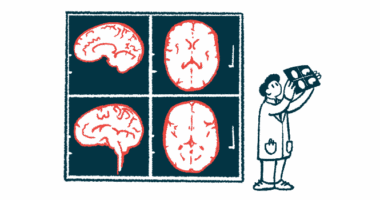Smokers have worse recovery after NMOSD relapse: Study
History of smoking linked to likelihood of persistent neurological lesions

A history of smoking is associated with poorer recovery from disease relapses in people with neuromyelitis optica spectrum disorder (NMOSD), a study reports.
Findings indicate that patients who smoke or are past smokers are more likely to have neurological lesions that persist months after the relapse, and that these persistent lesions are linked to poorer clinical recovery.
The study, “The effect of smoking on MRI lesion resolution in NMOSD-AQP4 and MOGAD,” was published in Multiple Sclerosis Journal.
It’s well established that smoking can have negative health consequences, including increasing inflammation and raising the risk of cancers.
In multiple sclerosis, which like NMOSD is an autoimmune, inflammatory disorder that affects the brain and spinal cord, a history of smoking has been associated with more disability and more neurological lesions.
Study examines impact of smoking in lesion resolution, recovery
The impact of smoking in lesion resolution and clinical recovery after an NMOSD relapse has not been thoroughly investigated, so a team of scientists in the U.K. conducted an analysis to learn more.
They looked back at the smoking status and MRI and clinical data from 57 NMOSD patients, all of whom were positive for antibodies against AQP4, the most common target of NMOSD-driving self-reactive antibodies.
The analysis also included data from 48 people with a related autoimmune disorder of the nervous system called myelin oligodendrocyte glycoprotein antibody-associated disease (MOGAD).
Among these 105 patients, 65 had never smoked, 26 were former smokers, and 14 were current smokers.
MRI data was acquired during a relapse and at least four months later, and the team assessed whether lesions visible during the attack resolved or were still present months afterward. They used statistical tests to see if the likelihood of having persistent lesions significantly differed based on smoking status.
Results showed that lesion persistence was found in nearly all current smokers (93%) and most former smokers (62%), compared with just 3% of patients who had never smoked. All group differences were statistically significant.
Partial healing of lesions was more than twice as common in former smokers than in current smokers, and none of the current smokers experienced complete lesion resolution.
Statistical models adjusted for potential influencing factors showed that the likelihood of lesions remaining months after relapse was 26.6 times higher in current smokers and 18.7 times higher in former smokers relative to those who never smoked.
The models also suggested that smoking increased the likelihood of having persistent lesions regardless of their location.
“Smoking was consistently associated with worse MRI lesion resolution, and both current- and past-smokers had significantly increased risk of MRI lesion persistence,” the researchers wrote.
In addition, MRI lesion resolution was significantly associated with a nearly twice as high chance of clinical recovery than persisting lesions in both NMOSD and MOGAD patients.
Particularly, nearly all patients (99%) who experienced partial or complete lesion resolution showed an easing of symptoms, and 83% of those with complete lesion resolution “experienced complete clinical relapse recovery,” the team wrote.
While smoking was found to increase the risk of persistent lesions in both NMOSD and MOGAD patients, those with NMOSD were less likely to show complete lesion resolution (23% vs. 58%) and clinical recovery (23% vs. 54%).
Also, compared with MOGAD, an NMOSD diagnosis was found to significantly increase the risk of persisting lesions by nearly twofold, regardless of smoking status.
These findings highlight that “smoking is associated with worse MRI resolution of inflammatory lesions in patients with NMOSD-AQP4 and MOGAD, which is in turn associated with clinical recovery from acute relapses,” the researchers wrote. “Smoking status may be taken into consideration in the clinical management of these conditions, and understanding the underlying [damaging] processes may help develop novel treatments.”
The scientists noted that their study was limited by its retrospective nature as well as the fact that there was variability into precise MRI setups used to image lesions in different patients.
As such, studies “designed to collect detailed smoking history and perform standardized research MRIs for quantitative assessment of lesion evolution” over time are needed to confirm these results, the team concluded.






